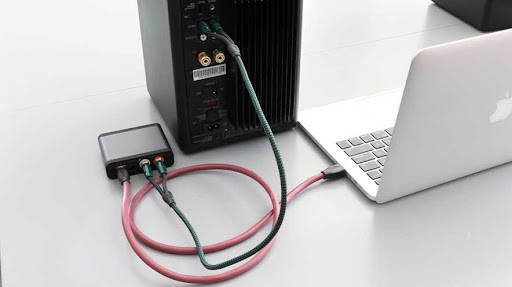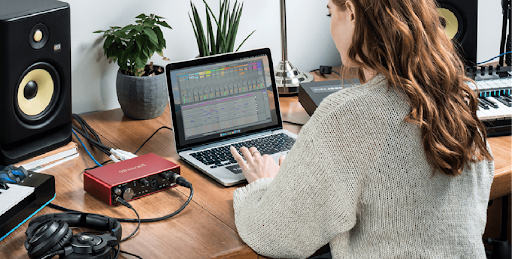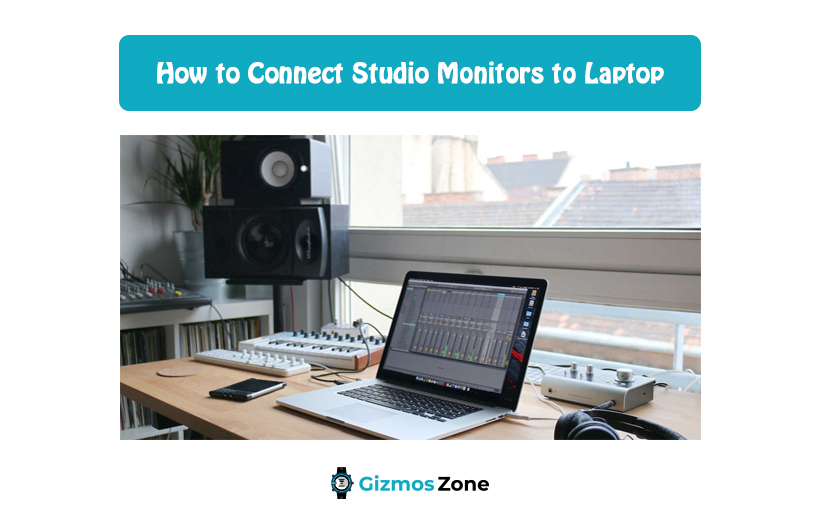You might want to enhance the audio experience of your laptop or monitor the details of the freshly recorded song. Moreover, you might be a music enthusiast and want to play the latest songs or playlists and monitor the sound created. Music artists and other music experts prefer studio monitors for an in the detailed view of the sound that they provide. Some of the essential functions that are carried out with these monitors are mixing, mastering, and recording. To be more precise your audio mix might consist of undesirable sounds or frequencies that cannot be heard over normal speakers. The studio monitors produce accurate sound with a picture of the mix so that you can identify the bug and enhance the quality of the mix.

Users might reckon the studio monitors to be loudspeakers that produce a louder and clearer sound. However, in reality, they have much more use than that. The studio monitors are also known as near-field monitors. This means that, unlike ordinary speakers, they do not come with features that let you enhance the sounds in regards to their frequency or pitch. This enables the device to record the sound in its original or raw start and turn permits the mix to result in a better quality audio piece. It is because of this genuine mix that music producers and music makers prefer studio monitors for making the audio smoother. If you are considering connecting the studio monitors with the laptop, then you should go through this article.

Steps for connecting the studio monitors to the laptop
To find out about setting up a connection between the laptop and the studio monitors follow the steps given below.
- You can make the connection using a Display port cable or HDMI if the laptop and the studio monitor are compatible with the connection settings.
- In case you are using the DVI port or the VGA port, you will require a 3.5 mm audio wire. As all the ports that are needed for the connection will have indications to get securely connected, you can identify the open ports and plug them accordingly.
- After the studio monitors are connected with the laptop, switch the unit on and connect them with the production software.
- Switch on the laptop at this point.
- The studio monitor will start receiving the video signal from the laptop and the monitor will show the laptop video.
- You can also configure the resolution of the monitor.
- Set the studio monitor resolution to the recommended setting.
- Now for playing the selected audio file, find the system tray.
- Right-click on the audio file icon and select the option Playback Devices.
- Choose the display name if the connection has been made through the HDMI or the VGA port.
- Next, right-click on the name of the studio monitor or the speakers and click on the Enable option.
- This shall ensure the fact that the devices are activated and connected.
- If the studio monitors are not selected as the default speakers, you can do so on your laptop by selecting the Set Default option.
- You might be asked to restart the laptop when the complete connection setting has been done. Once you have satisfactorily set up the laptop and monitored all the settings, you can restart the unit and check the connection.
- Once you feel that the setup is complete and everything has been done you can click on the OK button to finalize the settings.
What is an audio interface?
The term audio interface refers to the additional accessory or equipment, which enhances the aural capacity of the laptop. An audio interface comes with a few slots for expansion purposes so that multiple input and output sound-related devices can be connected to it like musical instruments, headphones, and studio monitors. The audio interface does not only enhance the aural capability of the laptop it also filters and improves the quality of sounds that are received by the laptop and the recording and mixing software. It acts like an external piece of the sound card that produces original sound with no filters. It can be connected to the laptop using a USB slot. Therefore, you can also connect the studio monitor with the audio interface for enhancing the sound further.
If you want to connect the studio monitor to the audio interface that has been connected to the laptop, you might make use of the right kind of equipment or accessories. Some of the accessories include cables, appropriate jacks, and other quality connectors. It is also crucial to be mindful of the fact that the chord from the monitor should be plugged in the correct port of the audio interface. Moreover, certain low-level audio signals might be taken as faint sounds. The audio interface connected to devices like the microphone transmits the sound as captured. However, these low-pitched sounds require a boost. The amplifier comes in handy in such situations. Therefore, when connecting the studio monitor to the audio interface, the monitors must be also connected to the line-level outputs.
FAQs
Can studio monitors be used to listen to music?
Yes, studio monitors can be used for music. Moreover, they can produce an excellent and accurate audio experience.
What is the crucial factor to consider while setting up the speakers?
One of the crucial factors is the chord length. Choosing the right wire length is very important so that the monitors can serve their purpose in the best way.
Should the studio monitors be connected to an audio interface?
Yes, connecting the studio monitors enhances the quality of sound both sent and received. You can select an audio interface from a range of choices.
Conclusion
You can connect the studio monitors to the laptop or the audio interface in the above-mentioned ways. Music-makers or artists who indulge in music mixes generally use studio monitors. Connecting the unit with the laptop will help them further with their mixing and mastering part.
Contents
